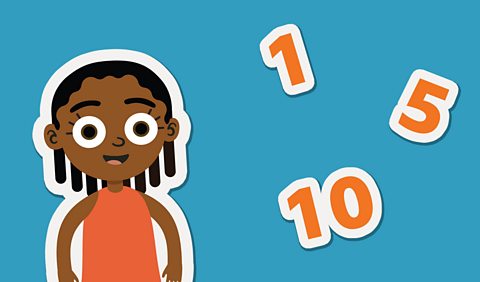How do you order numbers to 100?
When you order numbers to 100, you can arrange them from smallest to greatest or from greatest to smallest.
Look at the tens first and then the ones if you need to.
This number line goes from 0 to 100.

From left to right, the numbers increase from smallest to greatest.
From right to left, the numbers decrease from greatest to smallest.
Quiz: Ordering numbers to 100
Test out your knowledge of ordering from smallest to greatest with this quiz, then read on to complete the page.
Ordering numbers using tens and ones
Here are three numbers:
34, 19, 50
To find out which number is the smallest, you need to look at which number has the fewest tens.
Fewest means the smallest number, or the least amount. You can use this word when comparing numbers or amounts.
Here are the three numbers represented using blocks.
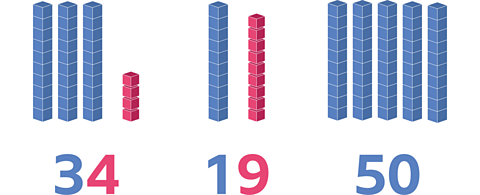
19 has the fewest tens, so 19 is the smallest number.
50 has the most tens, so 50 is the greatest number.
If two numbers have the same number of tens, you can use the ones to decide which number is smaller.
Let’s put them in order from smallest to greatest. You can place the 'less than' (<) symbol between the numbers.
19 < 34 < 50
Now let’s put them in order from greatest to smallest. You can place the 'greater than' symbol (>) between the numbers.
50 > 34 > 19
Ordering numbers using a number line
Here is a number line counting up in ones, from 43 to 63.

Now let's mark the numbers 52, 61 and 49 on the number line.
You can order them by finding them on a number line.

The greatest number is furthest along the number line.
61 is the furthest along the number line. It is the greatest number.
The smallest number is the least far along the number line.
49 is the least far along the number line. It is the smallest number.
Let’s order them from smallest to greatest:
49 < 52 < 61
Now let’s order them from greatest to smallest:
61 > 52 > 49
Did you notice that 52 has stayed in the middle?
Ordering numbers using a hundred square
Sometimes you might need to order four numbers. Look at these numbers:
91, 19, 63, 67
You would need a very long number line to order 91 and 19.
This is where a number square can be useful.
As well as helping you to count, a number square can also help you to order numbers.
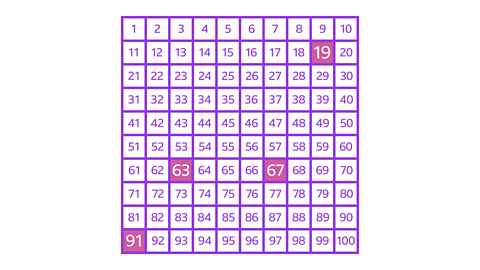
The numbers have been highlighted on this number square.
19 has the smallest number of tens. 91 has the largest number of tens.
Therefore, the smallest number is 19 and the greatest number is 91.
Did you notice that 63 and 67 both have the same number of tens?
63 has 3 ones and 67 has 7 ones. 7 ones are greater than 3 ones.
So, 67 is greater than 63.
Let’s order these numbers from smallest to greatest:
19 < 63 < 67 < 91
Now let's order them from greatest to smallest:
91 > 67 > 63 > 19
Example 1
Look at these four numbers.

Order the numbers 16, 61, 32 and 39 from smallest to greatest.
✓ The answer is:
16 < 32 < 39 < 61
You can find the answer to the question by first looking at the tens in the image to find which number is the smallest.
16 has one ten, so that’s the smallest number.
61 has 6 tens, so that’s the greatest number.
The 32 and 39 both have 3 tens.
So you have to look at the ones column.
32 has 2 ones. 39 has 9 ones, so 39 is greater than 32.
The numbers in order from smallest to greatest are shown below.

Example 2

Can you order these numbers from greatest to smallest using the number line?
41, 31, 59, 34
✓ The answer is:
59 > 42 > 34 > 31
Did you notice that the number line counts up in twos from 30 to 60?
Did you work out where 31 and 59 should be on the number line?
31 comes after 30 and before 32.
59 comes after 58 and before 60.
59 is the furthest along the number line, so it is the greatest number.
Next is 42, then 34.
31 is the first number on the number line, so it is the smallest number.

BBC Bitesize newsletter. External Link
Sign up to our BBC Bitesize newsletter to receive monthly news, stories and updates on latest Bitesize content.

More on Counting and ordering
Find out more by working through a topic
- count17 of 17
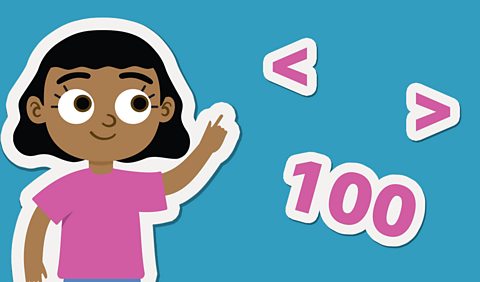
- count1 of 17
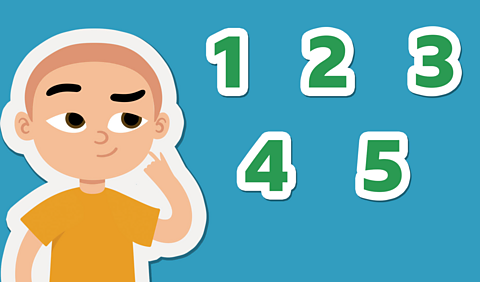
- count2 of 17
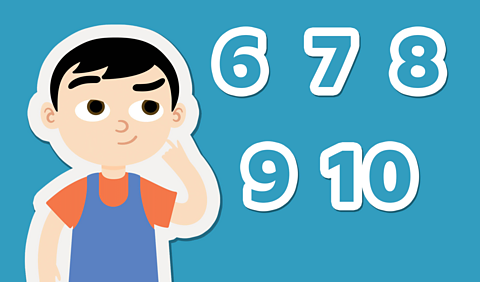
- count3 of 17
